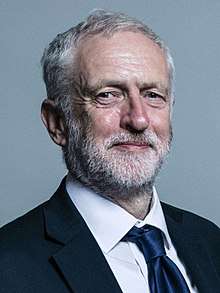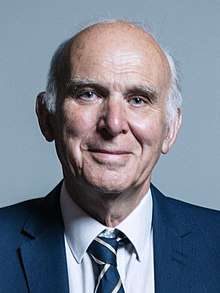Next United Kingdom general election
|
| |||||||||||||||||||||||||||||||||||||||||||||||||||||||||||||||||||||
| |||||||||||||||||||||||||||||||||||||||||||||||||||||||||||||||||||||
All 650 seats in the House of Commons[n 1] 326 seats needed for a majority | |||||||||||||||||||||||||||||||||||||||||||||||||||||||||||||||||||||
|---|---|---|---|---|---|---|---|---|---|---|---|---|---|---|---|---|---|---|---|---|---|---|---|---|---|---|---|---|---|---|---|---|---|---|---|---|---|---|---|---|---|---|---|---|---|---|---|---|---|---|---|---|---|---|---|---|---|---|---|---|---|---|---|---|---|---|---|---|---|
| Opinion polls | |||||||||||||||||||||||||||||||||||||||||||||||||||||||||||||||||||||
| |||||||||||||||||||||||||||||||||||||||||||||||||||||||||||||||||||||
| |||||||||||||||||||||||||||||||||||||||||||||||||||||||||||||||||||||
| 2010 election • MPs |
| 2015 election • MPs |
| 2017 election • MPs |
The next general election in the United Kingdom is scheduled to be held on 5 May 2022 under the Fixed-term Parliaments Act 2011. The election may be held at an earlier date in the event of an early election motion being passed by a super-majority of two-thirds in the House of Commons, or a vote of no confidence in the government which is not followed by a vote of confidence within 14 days.
Electoral system
Each parliamentary constituency of the United Kingdom elects one MP to the House of Commons using the "first past the post" system.
Voting eligibility
In order to vote in the general election, one must be:[1][2]
- on the Electoral Register;
- aged 18 or over on polling day;
- a British, Irish or Commonwealth citizen;
- a resident at an address in the United Kingdom (or a British citizen living abroad who has been registered to vote in the UK in the last 15 years);[n 8] and
- not legally excluded from voting (for example a convicted person detained in prison or a mental hospital, or unlawfully at large if he/she would otherwise have been detained,[3] or a person found guilty of certain corrupt or illegal practices[4]) or disqualified from voting (peers sitting in the House of Lords).[5][6]
Individuals must be registered to vote by midnight twelve working days before polling day.[7] Anyone who qualifies as an anonymous elector has until midnight six working days before polling day to register.[n 9] A person who has two homes (such as a university student who has a term-time address and lives at home during holidays) may be able to register to vote at both addresses as long as they are not in the same electoral area, but can only vote in one constituency at the general election.[9]
It is current UK government policy to pass a law removing the 15-year limit on expatriate Britons voting before the next general election takes place, as mentioned in the 2017 Conservative Party manifesto, which stated (page 42) "We will legislate for votes for life for British overseas electors".
Boundary review
The postponed Sixth Periodic Review of Westminster constituencies proposed reducing the number of constituencies from 650 to 600. In April 2016, each of the four parliamentary Boundary Commissions of the United Kingdom recommenced the review process, to be implemented in 2018.[10][11][12]
When each Commission published their Final Recommendation reports on 10 September 2018, psephologists Rallings and Thrasher estimated the House of Commons would look as below on the new boundaries:[13]
Date of the election
The Fixed-term Parliaments Act 2011 introduced fixed-term parliaments to the United Kingdom, with elections scheduled on the first Thursday in May of the fifth year after the previous general election.[14]
Removing the power of the monarch, on advice of the prime minister, to dissolve parliament before its five-year maximum length,[14] the act permits early dissolution if the House of Commons votes by a two-thirds supermajority, as occurred in the 2017 general election. Parliament is also dissolved if a government loses a vote of no confidence by a simple majority and a new government is not formed within 14 days.[15]
The next general election is due to take place on 5 May 2022.[16] Under the Electoral Registration and Administration Act 2013 parliament would be dissolved 25 working days before this date on 28 March 2022.[17] Under the Fixed-term Parliaments Act the prime minister may schedule polling day up to two months after 5 May 2022, subject to approval by both Houses.
The Conservative Party manifesto at the 2017 general election proposed repealing the Fixed-term Parliaments Act 2011.[18]
Contesting political parties and candidates
Most candidates are representatives of a political party, which must be registered with the Electoral Commission's Register of Political Parties. Candidates who do not belong to a registered party can use an "independent" label, or no label at all.
The Conservative Party and Labour Party have been the two biggest political parties, and have supplied every Prime Minister since 1935.
Parties in the tables below are sorted by their results in the 2017 general election.
The leader of the party commanding a majority of support in the House of Commons is the person who is called on by the monarch to form a government as Prime Minister, while the leader of the largest party not in government becomes the Leader of the Opposition. Other parties also form shadow ministerial teams. The leaders of the SNP and Plaid Cymru are not members of parliament, but instead members of their respective devolved legislatures, and so these parties have separate leaders in the House of Commons (Ian Blackford for the SNP and Liz Saville Roberts in the case of Plaid Cymru).
| Party | Party leader(s) | Leader since | Leader's seat | Last election | ||
|---|---|---|---|---|---|---|
| % of votes |
Seats | |||||
| Conservative Party | Theresa May | July 2016 | Maidenhead | 42.4% | 317 | |
| Labour Party | Jeremy Corbyn | September 2015 | Islington North | 40.0% | 262 | |
| Scottish National Party | Nicola Sturgeon | November 2014 | None[n 2] | 3.0% | 35 | |
| Liberal Democrats | Vince Cable | July 2017 | Twickenham | 7.4% | 12 | |
| Plaid Cymru | Adam Price | September 2018 | None[n 10] | 0.5% | 4 | |
| Green Party (England & Wales) | Jonathan Bartley and Siân Berry (job share) |
September 2016 & September 2018 | None[n 11] | 1.6% | 1 | |
Tim Farron announced his departure as Liberal Democrat leader shortly after the June 2017 election, staying on in a caretaker basis pending the Liberal Democrats leadership election. He was replaced by Vince Cable.
Northern Ireland
While a number of UK parties organise in Northern Ireland (e.g. Labour Party in Northern Ireland, but they do not field candidates) and field candidates for election (e.g., Conservative, UKIP), the main Northern Ireland parties are different from those in the rest of the UK.
| Party | Leader(s) | Leader since | Leader's seat | Last election | ||
|---|---|---|---|---|---|---|
| % (in NI) |
Seats | |||||
| Democratic Unionist Party | Arlene Foster | December 2015 | None[n 5] | 36.0% | 10 | |
| Sinn Féin | Mary Lou McDonald | 10 February 2018 | None[n 6] | 29.4% | 7 | |
| Social Democratic & Labour Party | Colum Eastwood | November 2015 | None[n 12] | 11.7% | 0 | |
| Ulster Unionist Party | Robin Swann | April 2017 | None[n 13] | 10.3% | 0 | |
| Alliance Party | Naomi Long | October 2016 | None[n 14] | 7.9% | 0 | |
Opinion polling

Footnotes
- ↑ The Sixth Periodic Review of Westminster constituencies is currently due to be implemented in 2018 and would reduce the number of seats to 600.
- 1 2 Nicola Sturgeon sits as an MSP in the Scottish Parliament for Glasgow Southside.
- ↑ Seat figure does not include Speaker of the House of Commons John Bercow, who is included in the Conservative seat total by some media outlets.
- ↑ Party only stands in Scotland (59 seats). It does not stand in enough seats to obtain a majority.
- 1 2 Arlene Foster sits as an MLA in the Northern Ireland Assembly for Fermanagh and South Tyrone.
- 1 2 Mary Lou McDonald sits as a TD in the Irish Dáil Éireann for Dublin Central.
- 1 2 Party only stands in Northern Ireland (18 seats). It does not stand in enough seats to obtain a majority.
- ↑ Or, in the case of a British citizen who moved abroad before the age of 18, if his/her parent/guardian was on the Electoral Register in the UK in the last 15 years
- ↑ The deadline for the receipt and determination of anonymous electoral registration applications is one working day before the publication date of the notice of alteration to the Electoral Register (that is the sixth working day before polling day).[8]
- ↑ Price sits as an AM in the Welsh Assembly.
- ↑ Bartley sits as a councillor on Lambeth Council whilst Berry sits on the London Assembly.
- ↑ Colum Eastwood sits as an MLA in the Northern Ireland Assembly for Foyle.
- ↑ Robin Swann sits as an MLA in the Northern Ireland Assembly for North Antrim.
- ↑ Naomi Long sits as an MLA in the Northern Ireland Assembly for East Belfast.
References
- ↑ "Representation of the People Act 1983, Section 1". Legislation.gov.uk. Retrieved 26 April 2017.
- ↑ "Types of election, referendums, and who can vote - GOV.UK". www.gov.uk. Retrieved 18 April 2017.
- ↑ Representation of the People Act 1983, Sections 3 and 3A
- ↑ Representation of the People Act 1983, Section 173
- ↑ "House of Lords Act 1999". Legislation.gov.uk. Retrieved 4 June 2017.
- ↑ "House of Lords Reform Act 2014, Section 4". Legislation.gov.uk. Retrieved 4 June 2017.
- ↑ Electoral Commission: Deadline for registration ahead of an election.
- ↑ cf "Guidance for Electoral Registration Officers (Part 4 – Maintaining the register throughout the year)" (PDF). Cabinet Office and The Electoral Commission. July 2016. p. 114 (para 7.128). Retrieved 8 June 2017.
- ↑ Electoral Commission (2016). "I have two homes. Can I register at both addresses?". electoralcommission.org.uk. The Electoral Commission. Retrieved 5 January 2011.
- ↑ "Boundary review launched". Boundary Commission for England. Retrieved 29 April 2016.
- ↑ "2018 Review of Westminster Parliamentary constituencies". Boundary Commission for Scotland. Retrieved 3 May 2016.
- ↑ "2018 Review". Boundary Commission for Wales. Retrieved 3 May 2016.
- ↑ "Ian Jones on Twitter". Twitter. Retrieved 2018-09-11.
- 1 2 Horne, Alexander; Kelly, Richard. "Alexander Horne and Richard Kelly: Prerogative powers and the Fixed-term Parliaments Act". UK Constitutional Law Association. Retrieved 17 August 2015.
- ↑ "House of Commons Debate 5 July 2010 c 23". parliament.uk. UK Parliament. 5 July 2010. Retrieved 8 September 2013.
- ↑ Tuft, Ben. "When will the next UK General Election be held?". The Independent. Retrieved 17 August 2015.
- ↑ "General election timetable 2015". parliament.uk. UK Parliament. Retrieved 8 December 2014.
- ↑ Conservative Party 2017 manifesto, p. 43


.jpg)

_2.jpg)
_(cropped_1).jpg)